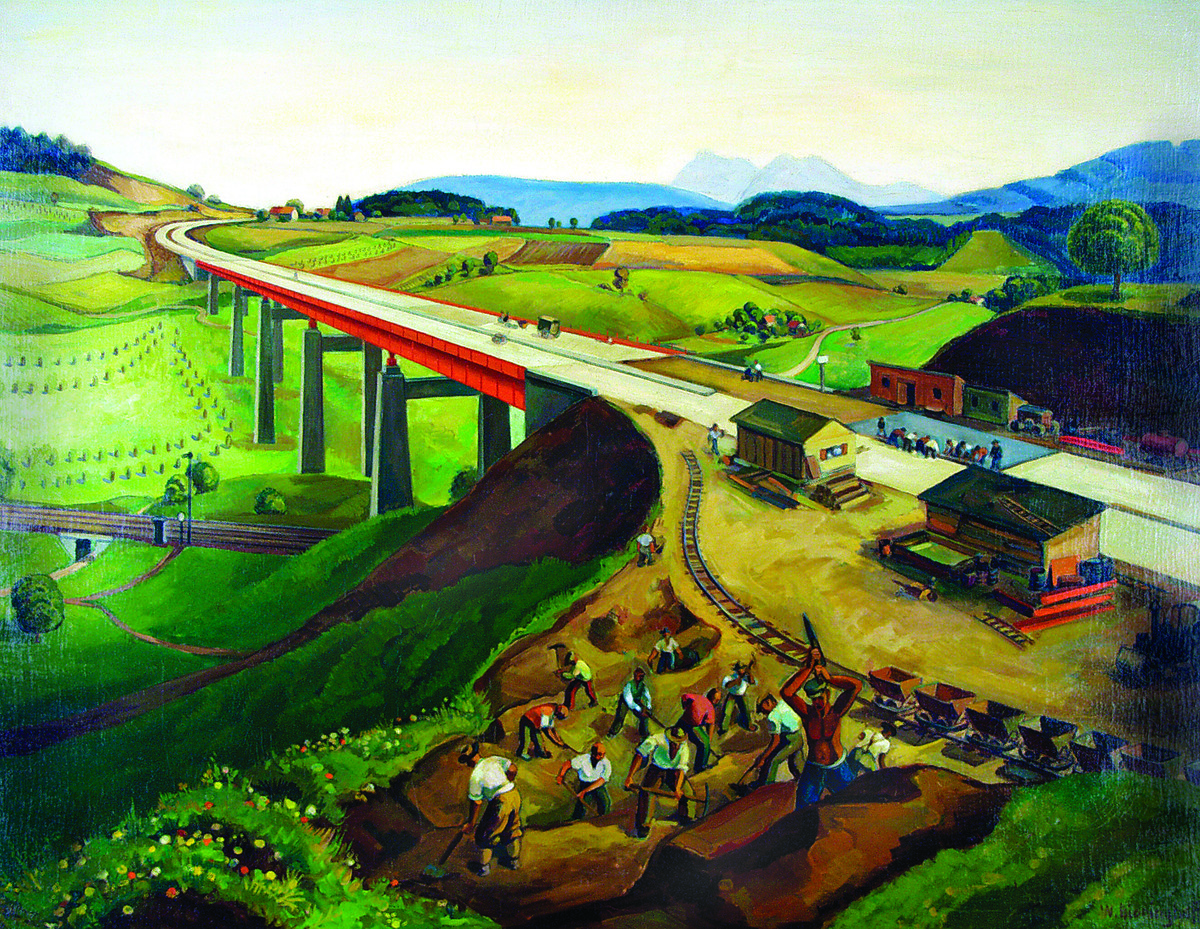Source

Source: Wilhelm Dieninghoff, Autobahn construction, 1936. Oil on canvas. Grohmann Museum collection, Milwaukee School of Engineering.
Marrying nature and modern technology formed a cornerstone of the Nazi understanding of Germans’ relationship with the natural world. Germans were called to celebrate the beauty of Germany’s natural landscapes, and prewar policies generally reflected that desire: the beauty of the landscape was not to be destroyed. Construction and development were supposed to work through, rather than against, nature, in order to showcase the landscape. A prominent example of this philosophy remains the German highway system (Reichsautobahn), a stretch of which is portrayed in this painting by Wilhelm Dieninghoff from 1936. Dieninghoff was a Bavarian landscape painter whose works were exhibited in the Große Deutsche Kunstausstellung, and Hitler owned two of his landscape paintings. The Reichsautobahn (RAB) initiative was a massive, nation-wide construction project that represented a major domestic campaign for Hitler. He believed a series of roadways should link the country to aid economic productivity and help Germans experience all the corners of the country. Roadways were designed to give Germans a greater appreciation for the beauty surrounding them. On an economic level, this massive construction project served as job creation scheme to demonstrate Germany’s economic recovery under Hitler’s leadership.

Source: Wilhelm Dieninghoff, Autobahn construction, 1936. Oil on canvas. Grohmann Museum collection, Milwaukee School of Engineering.
© Grohmann Museum collection